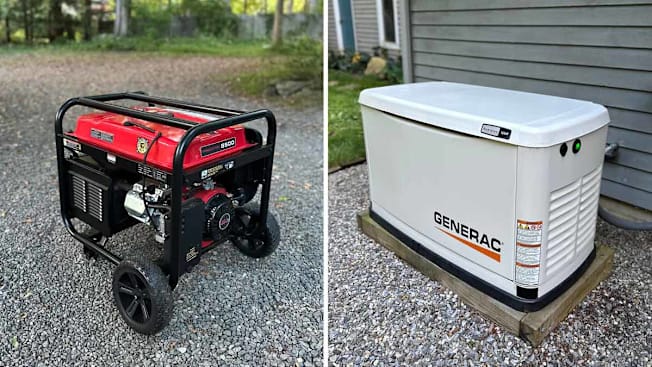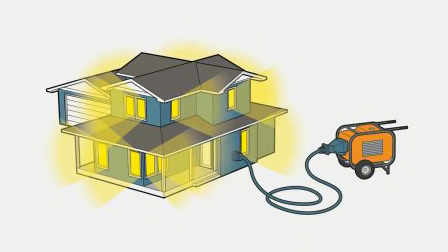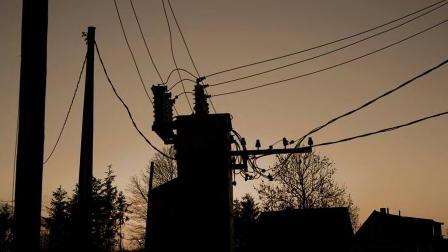Portable vs. Whole-House Generator: Which Is Right for You?
Both provide electricity during an outage—the choice comes down to convenience, price, and power
When you shop through retailer links on our site, we may earn affiliate commissions. 100% of the fees we collect are used to support our nonprofit mission. Learn more.

When the power goes out because of a hurricane, a storm, or a problem with the electrical grid, portable generators and whole-house generators will do the same important task: provide electricity until the power comes back on. But the two options are quite different in cost and convenience.
Portable generators are generally stored in a garage, basement, or shed and wheeled into position outdoors when needed. Smaller models use extension cords to power a few small appliances, while larger portables connect to your electrical panel via a transfer switch to power hardwired appliances like well pumps and water heaters.
Portable models tend to be noisier and produce less power than whole-house models, but they’re also much cheaper to buy and install than whole-house generators, which are installed permanently.
Whole-House Generators
Power output: 8,000 to 22,000 watts
Price range: $3,500 to $6,000
Fuel needs: 13 to 48 gallons of liquid propane or natural gas per day
Best for: If you face frequent outages that often last a long time and are willing to pay for the convenience of a generator that turns on automatically and runs almost indefinitely.
Pros: Whole-house generators are largely worry-free. They’re typically sized to power an entire house and turn on automatically. Propane models can run for days or weeks without refueling, while natural gas models can run indefinitely. They tend to be very quiet, and you don’t need to fuss with weather covers or canopies.
Cons: Whole-house generators are pricier. And the installation costs can range from a few thousand dollars to $10,000 or more. That’s because you might need an electrician to hook up the generator to your electrical panel, plus subcontractors who can handle the plumbing for a gas or propane line and build a steady, permanent base for the generator. Models are also reasonably large—about as big as a central air unit—so you need to allocate space for one on the side or back of your house.
Portable Generators
Power output: 2,500 to 8,500 watts
Price range: $400 to $2,700
Fuel needs: 12 to 20 gallons of gasoline per day
Best for: If you’re on a budget, experience infrequent and relatively short power outages, and are willing to start the generator regularly to make sure it’s ready to go in an emergency.
Pros: Portable generators are much cheaper to buy and install. When a large portable model is connected to your home’s circuit breaker panel with a transfer switch it can power almost as much as a home standby generator. Both large and small units have built-in outlets to power appliances with suitable extension cords if you haven’t installed a transfer switch. Smaller inverter units can also be used for camping or tailgating.
Cons: You need to wheel your generator out of storage, connect it to your transfer switch, and fire it up each time there’s an outage. Portable models also require you to store large quantities of gasoline mixed with fuel stabilizer to get through a prolonged outage. They tend to be noisier and have a lower output than home standby models.
Safety Features on Portable Generators
To reduce the risk of carbon monoxide (CO) poisoning, new generators often feature a built-in sensor that triggers an automatic shutoff if CO builds up to dangerous levels in an enclosed space. Some models also have engines that emit less CO.
All portable models in our ratings have one or both of these features, and we recommend portable generators only if they pass our CO safety technology test.
But our findings also reveal hazardous gaps that automatic shutoffs fail to address, reinforcing why it’s critical to follow safety guidelines even if your generator is equipped with CO safety features.
- Never operate a generator indoors, including in an open garage, shed, or similar structure.
- Position your portable generator at least 20 feet from your house with the exhaust directed away from it, as well as away from windows, doors, AC units, and other structures.
- Make sure you’ve got a working battery-powered CO detector in your living spaces to warn you of a buildup of the colorless, odorless gas.


Best Large-Capacity Portable Generators
The largest portable generators in our ratings offer about as much power as the weakest whole-home generators at just a fraction of the unit and installation cost. Check below for more on the top three large-capacity models.
Best Whole-House Generators
Whole-home generators in CR’s ratings are separated by capacity. Large-capacity generators can provide 15,000 watts of power or more, while small-capacity models are those that deliver less than 15,000 watts for a considerably cheaper price. Below are three of the top models in our ratings, including two small-capacity generators and one large-capacity model.
































